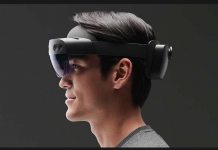Much of the growth has been attributed to popularity in business, especially with AR. “2016 marked an important step for the AR and VR headset market with product finally arriving in end users’ hands and on their heads,” explained Ramon Llamas, research manager of the Augmented and Virtual Reality team at IDC. “While there was clear demand coming primarily from technology enthusiasts, what became readily apparent were the use cases for enterprise users across multiple verticals and for consumers with gaming and content consumption. This sets the stage for the multiple aspects of the market that device makers, platforms and content providers, and developers will be addressing in the months and years to come.”
Productivity Growth
One of the biggest driving factors behind enterprise investment is potential productivity growth. In this case, Microsoft’s technology seems to be a big point of interest. IDC mentions interaction with organs or building blueprints in real-time, two applications we have seen with the HoloLens already. This combines with the large number of vendors taking advantage of Microsoft’s HoloLens Agency Readiness Partner Program. The scheme helps companies understand the benefits of HoloLens, and received six new partners this month. However, Microsoft is far from the only player in AR and VR, and IDC admits that much of the predicted growth comes from the amount of different vendors. Using Microsoft’s Holographic shell, Dell, Acer, HP and Intel will be releasing mixed reality devices. There’s an even larger number of VR vendors, including giants like Google, Facebook, Valve and Samsung. Despite this, IDC admits that it’s an “aggressive” forecast. Firms such as Strategy Analytics have a more conservative estimate of $10 billion revenue by 2022. Whatever the case, the interest from consumers is there. The real trial or AR will be the ability to deliver premium headsets at a lower price. In Microsoft’s case, that may not be until the consumer version, which is set to launch in 2019.




